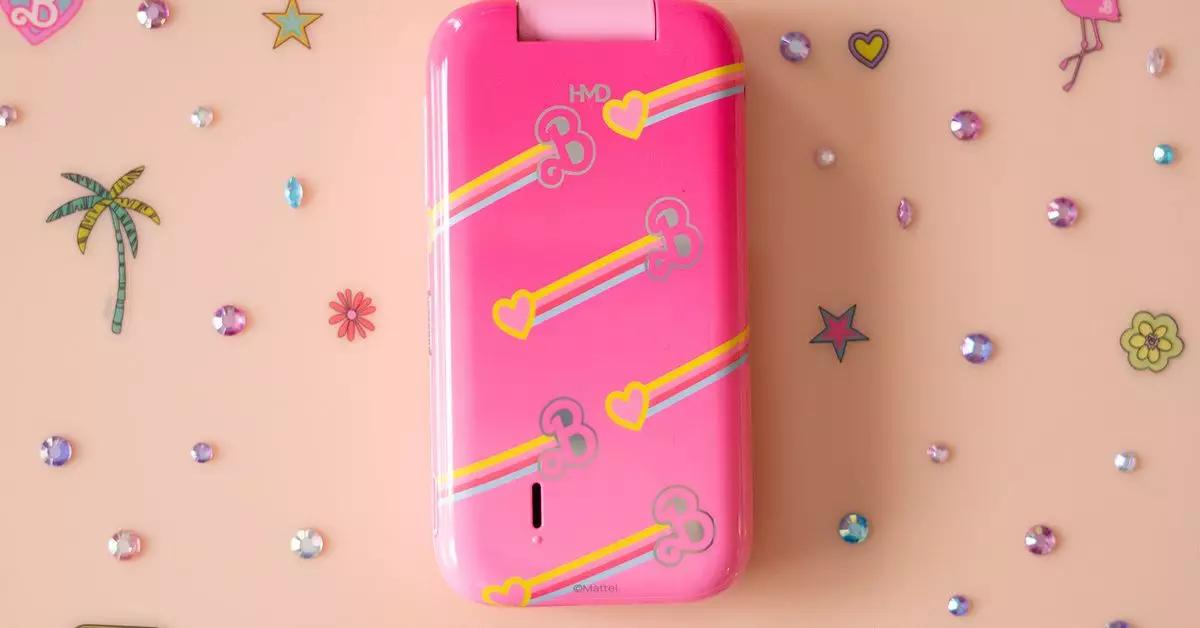In the world of consumer technology, products often blend artistry with functionality. The Barbie Phone, a whimsical twist on the traditional mobile device, aims to capture the playful spirit of the beloved doll while delivering basic functionality. However, despite its aesthetically pleasing elements, this phone reveals a troubling dichotomy between nostalgia and practical usability.
At first glance, the Barbie Phone, much like the iconic Barbie doll, is a visual delight designed to evoke fond memories. Coming adorned with a vibrant box, interchangeable back plates, and charming accessories like rhinestone stickers, it embodies the quintessential charm associated with Barbie. Even the pink charger and battery, although a shade lighter than the classic Pantone 219, contribute to its overall cute and vibrant presentation. When activated, the phone greets you with a whimsical “Hi Barbie!” setting the stage for a fun experience—at least on the surface.
However, the superficial elegance of the Barbie Phone runs deeper than its bright exterior. The nostalgia-laden design invites users to see it as more than just a phone; it’s an homage to a childhood icon that resonates with many. Yet, as one starts to explore beyond its glamorous facade, layers of limitations reveal themselves, contrasting sharply with the lively aesthetic.
At its core, the Barbie Phone is predicated on HMD’s feature phone model, featuring an operating system known as KaiOS. This restricted functionality confines users to basic activities—texting, calling, and email—while a rudimentary web browser provides minimal internet capability. While the overarching notion is to promote a digital detox, the actual execution falls short.
The inclusion of “Barbie Tips” in the menu is not just a quirky addition but rather a misguided attempt to balance technology with real-life interaction. For example, Tip 1 suggests users maintain a connection to their smartphones while using the Barbie Phone. The contradiction of encouraging partial detachment while simultaneously focusing on limited features leads to confusion and a sense of disjointed experience. The intention behind these features—to promote moments of direct interaction amongst friends—remains admirable yet difficult to achieve in reality.
Some users might find it picturesque to navigate away from smartphones briefly; however, the transition creates a unique set of challenges. Entering passwords on an alphanumeric keypad can become an arduous task, especially for those accustomed to the swiftness of modern touchscreens. Meanwhile, using T9 predictive text is not only tedious but often yields perplexing autocorrections, which could turn simple conversations into accidental comedic exchanges.
The Barbie Phone’s technical frailties compound the experience of frustration. Despite successful attempts at syncing Google Calendar, appointments appeared on incorrect days, sparking confusion rather than clarity. Furthermore, the FM radio app’s failure to recognize standard earbuds left users yearning for the seamless experiences offered by more contemporary devices. This phone, which promised playful interaction, instead became burdensome due to slow performance of its web browser— rendering simple websites cumbersome to use.
The initial excitement surrounding the phone’s aesthetics is often overshadowed by its operational shortcomings. The mirror-like front, once seen as cute and glamorous, soon becomes an uninvited reminder of smudges—an ironic twist for a device marketed towards fun and charm. The moment of checking notifications can quickly transform into an uncomfortable reflection of one’s reality, rather than the expected escapism into a Barbie-inspired fantasy.
Ultimately, the Barbie Phone serves a dual purpose: it is both a charming collector’s item and a feature phone that struggles to find its footing in the realm of daily utility. While some users may embrace the idea of retreating into a more straightforward form of communication, the practicality of daily life demands more than what this device can provide. For those deeply rooted in nostalgia or collectors of unique gadgets, the Barbie Phone is a delightful find. Conversely, for anyone hoping to make the transition from a smartphone seamlessly, it can be a disheartening experience.
While the Barbie Phone enchants the eye with its nostalgic design and playful elements, it ultimately falls short in delivering the practical functionality users need in their daily lives. It reminds us that while nostalgic charm holds its value, it cannot overshadow the essential role of modern connectivity and usability in today’s tech-savvy world. Much like the famous doll itself, the Barbie Phone remains a dream, perfect for display but awkward in practicality.

